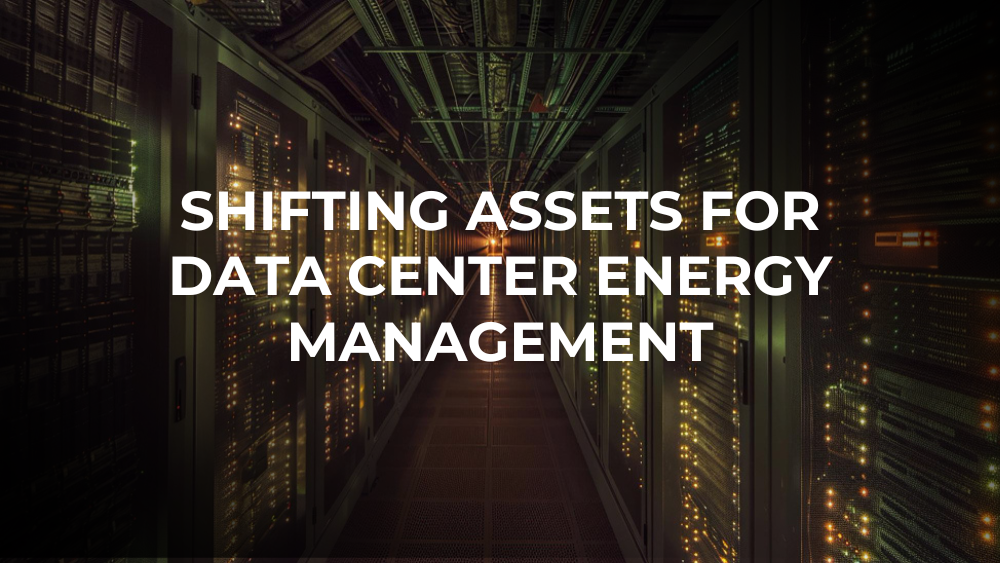Distribution utilities and networks play an important role in ensuring that we, as customers, receive reliable and safe electricity. However, their job is often challenging as they typically have smaller budgets and larger service areas than their transmission counterparts. This makes managing the distribution network a significant undertaking.
Although every network area and the challenges they face are different, there are some common pain points that affect the majority of operators.
1. Aging Infrastructure
The power grid has parts that are more than 100 years old. This makes it hard for utilities to manage assets that are nearing the end of their life cycle.
The decision to maintain or replace becomes increasingly difficult as it requires a significant funds allocation. Recently, the Department of Energy in the U.S., found that more than 70% of the transmission lines were halfway through their 50-year life. Upgrading the grid is capital intensive, where estimated costs could be between $1 trillion and $2.4 trillion by 2050.
However, upgrading to Smart Grid Technologies can help manage electricity demand and improve system reliability.
2. Unpredictable Demand
Electricity demand has risen by 10% in the past year, and further increases are expected with the rise in EV's and Data centres.
In fact, experts project an additional ~9000 TWh demand by 2040, with almost 70% of it coming from Data Centers and the ICT sector. Balancing this additional supply and demand with economic pressures is a challenge.
Both consumers and businesses directly feel the impact of increased demand. This is because wholesale electricity prices reflect the operational stress of meeting these periodic spikes in demand.
3. Advanced Data Analytics and Automation
Data analytics and automation help distribution utilities in several ways. They improve operational efficiency by finding patterns and trends that streamline operations and reduce waste. For instance, using data analysis, utilities can predict peak usage times and plan, lowering the chance of system overload and service interruptions.
Also, data analysis is essential in decision-making. It gives administrators a clearer view of their operations and market trends, helping them make strategic decisions to meet their operational goals and customer needs.
Predictive analytics (Learn more about how Arcus Power is enabling over 140 Utilities & Commercial and Industrial businesses using predictive analytics) can foresee potential issues by studying trends in past data. This allows utilities to identify risks and tackle them proactively, like preventing outages before they occur.
Moreover, data analytics can reveal customer behaviors, preferences, and needs, providing insights for utilities to create customized services, improve response times, and improve customer experience.
Finally, even though data analytics needs an initial investment, it can lead to significant cost savings in the long term. It enhances efficiency, allows proactive problem-solving, and helps utilities lower operational costs, thereby improving their bottom line.
4. Regulatory Compliance
Utility companies are seeing less profit. This is due to costs like research, training, and upgrades, which all come from trying to stay compliant. Often, these costs end up being passed on to the customers, leading to less demand. More competition, a result of changes in rules, also impacts profits.
More competition is coming into the market. Changes in regulations are breaking down the monopoly of big utility companies and making the market more competitive. This allows new companies to bring in fresh, cost-saving services, which can be a problem for the existing firms. So, old firms need to change and grow to keep their market share.
Government goals for making more renewable energy to decrease carbon emissions also present a challenge. To reach these targets, utility companies need to put a lot of money into renewable infrastructure, which means more costs. The challenge for these companies is to balance the money they make from selling renewable energy with the costs it takes to produce it.
5. Asset Management and Asset Inventory Maintenance
Keeping an up-to-date record of hundreds of thousands of assets is a massive challenge.
The utilities often face challenges, particularly in the creation and maintenance of a reliable asset database. The process starts with clearly defining the assets for the register and identifying the stakeholders involved.
Collecting the information needed about the assets can be hard because asset attributes are complex. Understanding the relationships between assets is vital for operational efficiency, but it's a complex task that requires thorough analysis.
To stay accurate, the asset database needs continuous updates, reflecting changes in both the physical environment and logical resources. A concept called the 'digital twin', a virtual representation of the current infrastructure, represents a fully synchronized database. It can help identify issues in new technology deployments and assist in fault diagnosis before actual deployment.
A unified asset register can help streamline operations and outage planning, thereby improving asset utilization.
6. Cost Management
Rising costs, including asset maintenance, new construction, and vegetation management, result in higher rates for customers. Utilities also face regulatory and funding pressures to justify their expenditure decisions.
7. Minimizing Restoration Time
Minimizing restoration time is critical to maintain customer trust and protect a utility company's reputation. When outages occur, they not only disrupt services but can also lead to significant customer dissatisfaction. The key to minimizing restoration time is accurately and quickly identifying the location and cause of the outage.
This is where Predictive Maintenance Technologies come into play. These technologies utilize advanced analytics, and artificial intelligence to monitor equipment conditions in real-time. By analyzing this data, they can predict potential equipment failures before they occur. This allows utility companies to schedule maintenance proactively, thereby preventing outages, reducing downtime, and improving overall service reliability.
This proactive approach to maintenance not only minimizes restoration time in case of an outage, but also prevents outages from occurring in the first place, significantly enhancing the customer service experience and maintaining the utility company's reputation.
8. Storm Preparedness
Extreme weather changes, such as blizzards, hurricanes, heatwaves, and floods, are a significant challenge for the utility sector. These unpredictable events can cause severe damage to infrastructure, disrupt services, and impact the reliability of power supply. To build resilience against such conditions, utilities must undertake several measures.
Firstly, predicting weather patterns using advanced meteorological tools and data analytics can help utilities prepare for potential disruptions. Accurate weather forecasts allow utilities to mobilize resources and implement preventive measures before a severe weather event occurs.
Secondly, identifying critical network locations is important. These are areas where damage could result in significant service disruptions or safety hazards. Once utilities identify these locations, they can prioritize them for maintenance, upgrades, or additional protective measures.
Thirdly, managing vegetation risks is crucial. Overgrown or unstable trees and plants are always going to be a threat to power lines, especially during storms or high winds. Regular trimming and maintenance of vegetation around infrastructure can help prevent damage and subsequent power outages.
9. Digitization
Digitization is an important step in modernizing the utility sector. It involves transforming traditional energy systems into digital ones by integrating information and operational technology.
Using digital technology in a utility changes how it works and benefits customers. Integrating different systems and technologies can be challenging because of their complexity. However, it can be difficult due to the complexity of integrating various systems and technologies.
Integrated digital platforms can greatly aid in this transformation. These platforms help utilities monitor and control operations more effectively by providing real-time data and analytics. This enables more efficient energy distribution, predictive maintenance, and better decision-making.
For instance, with a digital grid, utilities can better manage electricity flows based on real-time data, leading to greater grid stability. Predictive maintenance, powered by machine learning algorithms, can identify potential equipment failures before they occur, reducing downtime and operational costs.
However, implementing a digital transformation strategy requires a cultural shift within the organization. Utilities must encourage innovation, invest in digital skills, and create an environment that fosters a digital mindset.
10. Aging Workforce
The retirement of Baby Boomers could cause a shortage of qualified utility workers. Attracting qualified professionals is a major challenge. Embracing Digital Transformation could make the sector more attractive to upcoming younger generations.








.webp)






.png)


